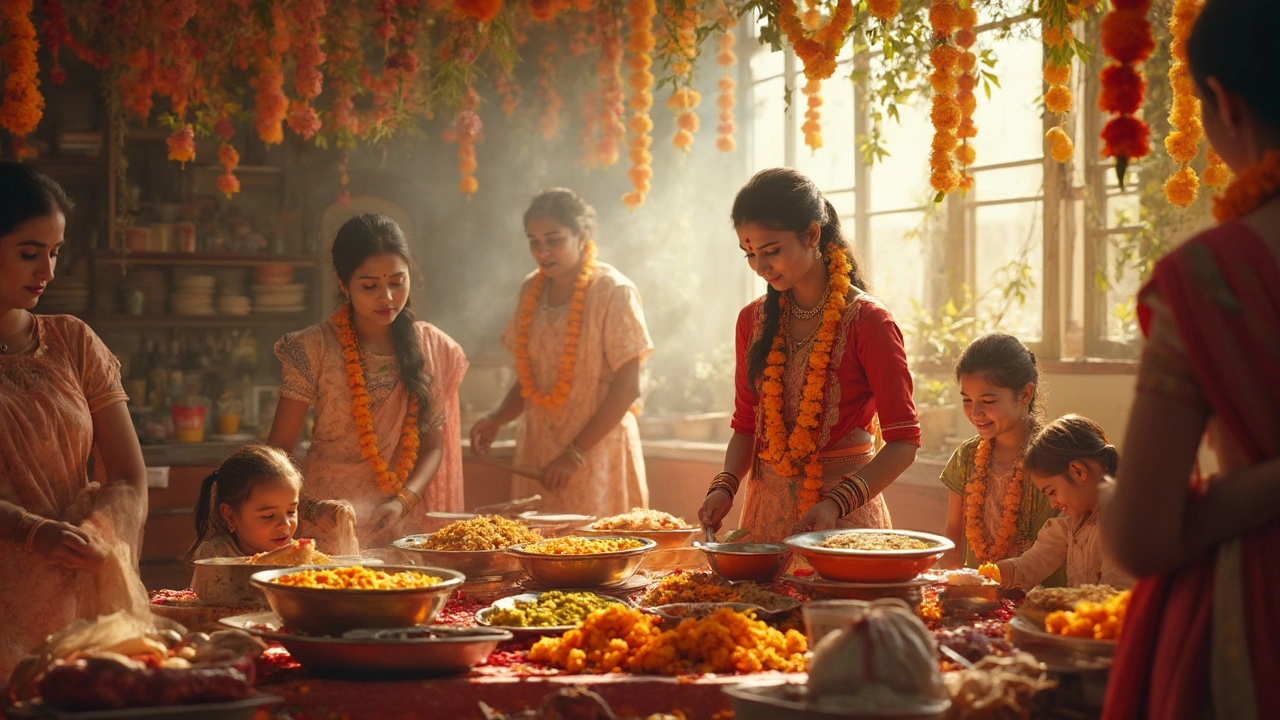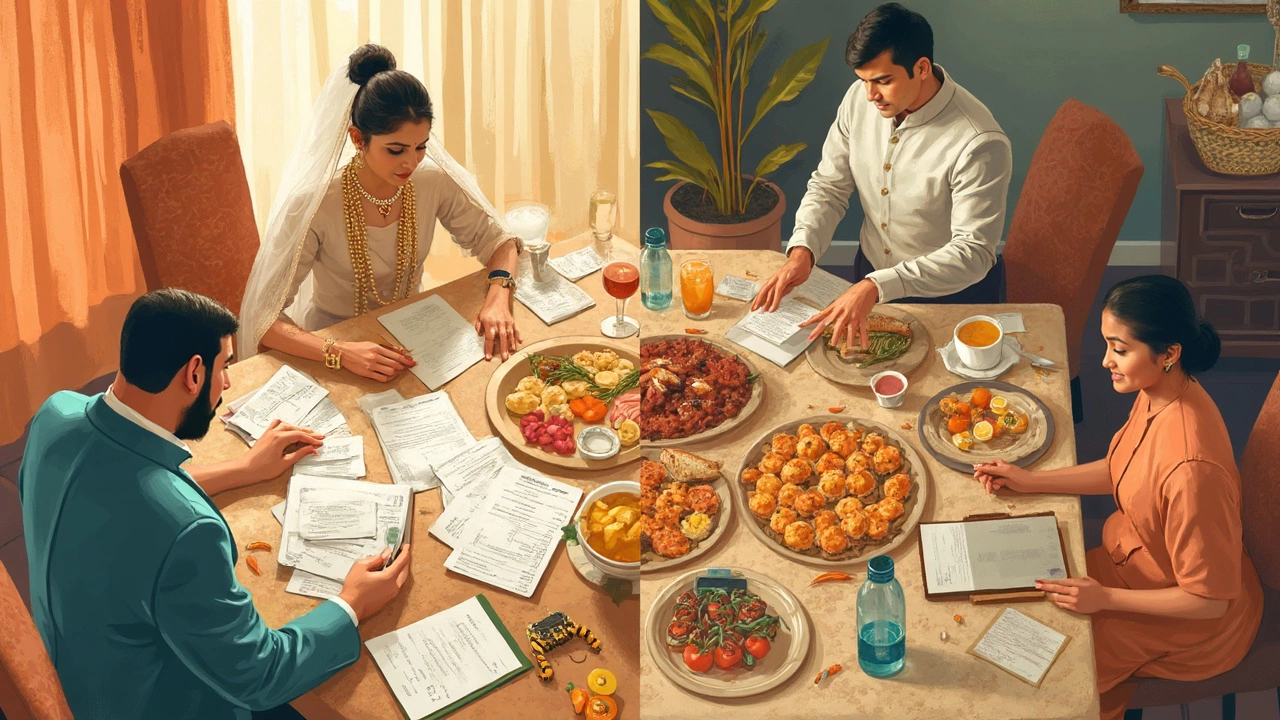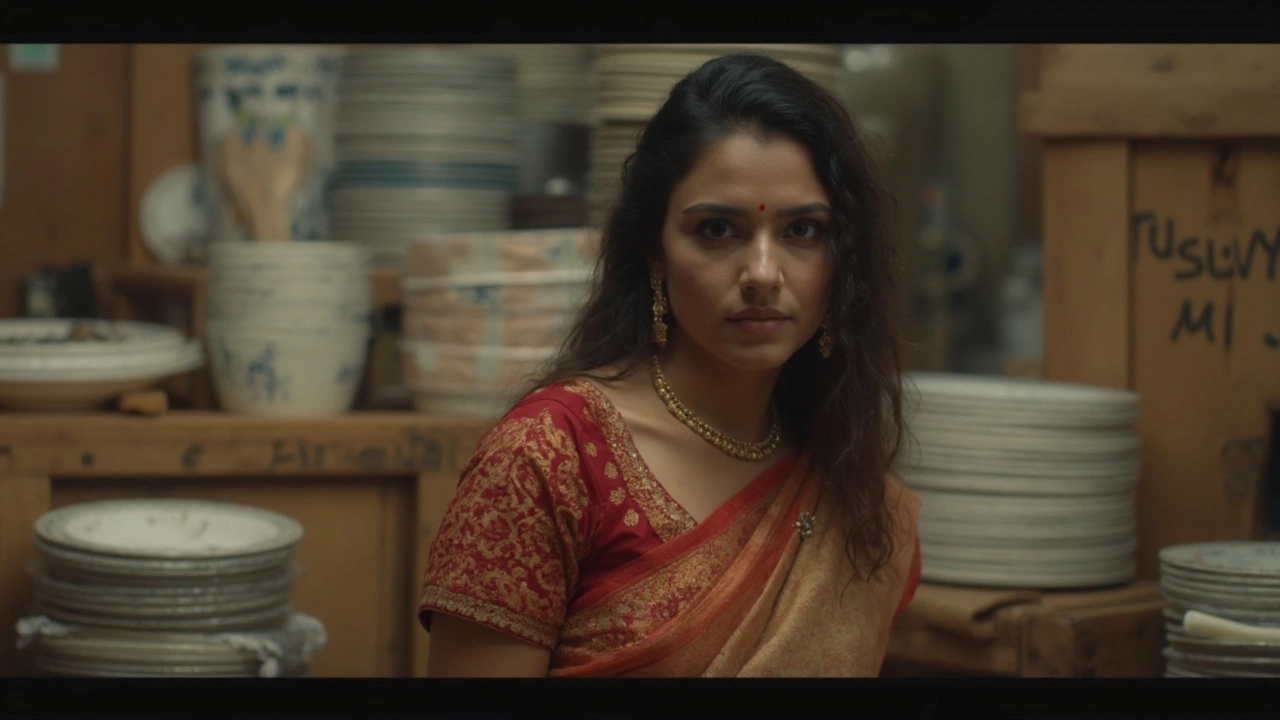
Ask around, and nearly everyone will tell you, “You’ll save a ton if you cater the wedding yourself!” Sounds great, right? Before you start ordering Costco sheet cakes and recruiting your mom’s friends as waitresses, let’s get real about the numbers and the work involved.
Food isn’t your only cost. Ingredients, drinks, serving dishes, utensils, napkins, and even warming trays add up way faster than you’d think. Then there’s the stuff nobody remembers until too late—ice, trash bags, chafing fuel, rentals, and coolers. Stocking up on all this can easily chew through your budget for “just food.”
Then come the questions nobody wants to ask (but really should): Who’s going to spend the morning of your wedding hauling in sandwich platters? Who handles giant pots of mac and cheese when you’d rather be getting your hair done? Who’s cleaning up when everyone else is hitting the dance floor?
- Breaking Down DIY Wedding Catering Costs
- Hidden Expenses People Forget
- The Time and Stress Factor
- Tips to Save Without Regret
- When Going Pro Beats DIY
Breaking Down DIY Wedding Catering Costs
So you’re eyeballing DIY wedding catering, hoping to save a chunk of cash. But how much are you really spending once you buy everything you need? It’s more than just groceries—the full picture can be surprising.
Let’s look at where the money actually goes. Here’s a quick breakdown of what you'll need for a typical 100-person wedding where you’re handling the food yourself:
| Expense | Average Cost |
|---|---|
| Groceries (main dishes, sides, salad, bread) | $1,000 – $1,500 |
| Desserts (cakes, cookies, batches) | $200 – $400 |
| Beverages (non-alcoholic) | $100 – $250 |
| Ice, cups, napkins, plates, utensils | $150 – $350 |
| Serving trays, chafing dishes, food warmers | $200 – $400 (rent or buy) |
| Rental fees (tables, chairs, linens) | $400 – $750 |
| Coolers, trash bags, cleaning extras | $50 – $100 |
Be honest—did some of these items catch you off guard? Most people forget about how fast the extras add up. The total can land anywhere from $2,100 to $3,750. Compare that to a budget caterer, who might charge $30–$50 per guest (so that’s $3,000–$5,000 for 100 people, service and cleanup included).
Here are the most common things you’ll need to factor in for your DIY wedding catering costs:
- Bulk food shopping: Warehouse stores like Costco or Restaurant Depot are your friend, but prices have shot up lately. Don’t forget seasonings, sauces, butter, or the cost of taste tests and failed recipes.
- Servingware: You’ll need more than grandma’s pyrex. Go for disposable, or add the rental cost for restaurant trays, chafing racks, sterno fuel, big bowls, tongs, and serving spoons.
- Rentals: Most home kitchens just can’t handle prepping food for 100. Plan for a rental kitchen, extra fridges, or at least borrowing space from friends.
- Drinks: Big batch lemonades, soft drinks, coffee, plus ice—so much ice. If you want alcohol, that’s another major cost and a whole other layer of logistics.
- Logistics and cleanup: Factor in the cost (and hassle) of hauling, setting up, and cleaning all the gear. If you skip hiring staff, you might be bribing friends or family—don't forget to count their meals and maybe even some thank-you gifts.
Bottom line: DIY catering looks cheaper on paper, but every single item matters. Being realistic with your spreadsheet before jumping in saves lots of stress (and probably money) later down the line.
Hidden Expenses People Forget
When you hear about weddings that went way over budget, it’s usually the hidden stuff that caught people off guard. With DIY wedding catering, the little extras can easily blow your plans out of the water. Here’s where things sneak up on nearly everyone:
- Rentals and gear: Plates, glasses, cutlery, serving bowls, pitchers, and even the coffee urns. Rental shops often charge by the piece, and some require high minimum orders that aren’t obvious online.
- Warming/cooling equipment: Chafing dishes, ice buckets, big coolers, and fuel cans or trays for keeping food at safe temps. Forget to budget for these, and you’ll be stuck last minute, paying premium prices.
- Deliveries and pickups: Grocery delivery, ice runs, or equipment drop-off fees can add up—especially if you live a drive from the nearest rental store.
- Cleaning fees and replacements: Lost or broken rental items are never cheap, and cleaning “unexpected messes” (think: spilled punch on linen) usually means surprise charges afterward.
- License and insurance: Some venues require proof of food safety permits or liability insurance, even if the food is homemade. These aren’t fun to get and can be costly if you learn about them last-minute.
- Disposable extras: Think trash bags, plastic wrap, foil, take-home containers for leftovers, hand sanitizer, and napkins (people use way more than you’d guess).
One real-life example: a couple in Ohio spent an extra $570 more than planned on ice, disposable plates, and last-minute rental upgrades when their original supplier ran out a week before the wedding. These little things don’t sound like much, but when you’re serving 80 or 150 guests, suddenly everything is multiplied.
If you decide to tackle the food, keep a running list and price checks for the entire setup, down to the last salt shaker. Surprises are fun at birthdays—not so much when you’re tallying up your wedding bills.

The Time and Stress Factor
Here’s something most guides skip: DIY wedding catering can eat up hours and ratchet up your stress, sometimes way more than you expect. Think about the days leading up to your wedding. You’re juggling RSVPs, managing seating charts, and now you’re prepping food for a crowd? It’s a lot to pile on. According to a 2023 survey by The Knot, couples who planned and executed their own catering spent an average of 24 extra hours just on food prep—sometimes crammed into the last 48 hours before their big day.
All those details add up fast. Cooking for 100 guests isn’t like hosting family dinner. You’ll need to coordinate grocery store trips, haul ingredients, find space for food storage, and figure out how you’re keeping dishes hot (or cold) until the last bite is eaten. And don’t forget about setting up serving tables, decorating, and cleaning up. It’s a logistical puzzle with pieces that love to go missing, especially when you’re under pressure.
Let’s talk stress. Last-minute mishaps are common: food runs out, ice melts, or the oven breaks. You (or the volunteers you wrangled) are on the hook for every hiccup, with no backup. Even professional caterers sometimes bring extra staff for wedding days because things rarely go exactly as planned.
- More than half of DIY couples from a 2024 Zola poll said food prep was the most stressful part of the wedding to manage themselves.
- Most folks underestimate clean-up; it can extend late into the night, which is the last thing you want after a long day of hosting and celebrating.
- DIY means loved ones helping miss out on parts of the celebration, too. If your aunt and best friend are busy serving, they’re not enjoying your first dance or joining you for cake.
If you really want to save on DIY wedding catering, weigh the cost in time and energy. It’s not just about your wallet—your memories are on the line. Sometimes, paying for help saves more than money.
Tips to Save Without Regret
If you're set on a DIY wedding to keep your budget in check, it pays to be smart. Cutting costs isn’t just about buying cheaper food — it’s about making good choices before you hit the store. Here’s how couples get real savings without wishing they’d done things differently.
- Keep the menu simple. Stick with options that taste great and hold up well over time — think pasta salads, sliders, tacos, or big-batch sides. Avoid dishes that must be hot and perfect at a certain minute.
- Buy in bulk. Warehouse clubs like Costco and Sam’s Club aren’t just for snacks. Their party platters and appetizer trays cut costs per head and save stress on prep.
- Rent instead of buy. Need chafing dishes, serving spoons, or even tablecloths? Local party rental shops are cheaper than buying all new. Divide your list of must-haves: what you can borrow, what to rent, and what you actually need multiples of.
- DIY only the easy parts. If roasting a hundred chickens sounds overwhelming, just do desserts or appetizers yourself and let pros handle the main meal. You’ll still save and skip the biggest headaches.
- Recruit help the right way. Assign clear jobs to trusted friends or family who offered. Make it simple: who’s in charge of setting up, serving, and breaking down?
A national survey by The Knot found the average per-person cost for professional catering in 2024 was $75, but many DIY couples still spent $45–$60 a head after all expenses. Here’s a quick breakdown:
| Expense | DIY Avg. Cost (per person) | Pro Catering (per person) |
|---|---|---|
| Groceries & Prep | $25 | — |
| Rentals (tables, chafing, linens) | $12 | Included |
| Disposable Supplies | $7 | Included |
| Labor | Free (self/friends) | $28 |
| Total | $44 | $75 |
Sometimes it helps to hear it straight. As Megan K., a wedding planner from Boise, puts it:
“The happiest DIY couples are the ones who planned way ahead and let themselves off the hook for a few things. If you want to enjoy your day, don’t try to do it all.”
Timing is everything, especially with food. Prep as much as possible before the big day. And don’t be afraid to delegate or go half-DIY, half-professional — for lots of couples, that’s the secret sauce for a happy (and still affordable) reception.

When Going Pro Beats DIY
Sometimes, hiring a pro for your wedding catering really does save you grief—and might even save money once you count every hidden cost. Here’s when it’s smarter to call in the experts:
- Guest count over 50? Juggling food and service for more than 50 people is a recipe for stress, even with a small army of helpers. Professional caterers have the gear, bodies, and systems.
- Venue restrictions. Some places require licensed caterers for things like insurance, health rules, or access to kitchen space—no exceptions.
- Food safety. Companies have the right coolers, temp checks, and plans for leftovers. A quick fact: According to the CDC, food poisoning cases spike at large self-catered events.
- No cleanup stress. You get to relax—pros swoop in to handle leftover food, dirty plates, and even trash disposal.
- Liability headaches. If someone gets sick, a pro company has insurance to cover it. DIY? It’s on you.
- Special diets or allergies. Caterers are trained to deal safely with gluten-free, vegan, or nut-free requests. One slip at home could mean a hospital run.
To make it more concrete, here’s a quick comparison of typical costs for a DIY wedding versus a basic professional caterer for 100 guests, with real numbers from early 2025:
| Expense | DIY Cost (USD) | Pro Catering Cost (USD) |
|---|---|---|
| Ingredients & Drinks | 1,400 | — |
| Serving/Rental Gear | 800 | — |
| Extra Supplies (ice, fuel, disposables, etc.) | 370 | — |
| Labor (friends/family gift cards, extra staff, etc.) | 350 | — |
| Total DIY | 2,920 | |
| Basic Pro Catering (per guest average $33 in 2025) | 3,300 |
Sure, you might spare a few hundred dollars going the DIY route, but you’ll hand over days of work and a pile of stress. With DIY wedding catering, last-minute problems (burned food, late volunteers, missing supplies) land on your shoulders. Pros have backup plans and experienced staff, saving you from food flops and frantic fixes.
Before you pick up a chef’s hat, weigh the real-life trade-offs. Sometimes, actually enjoying your own wedding is worth the price tag.



Comments
Post Comment